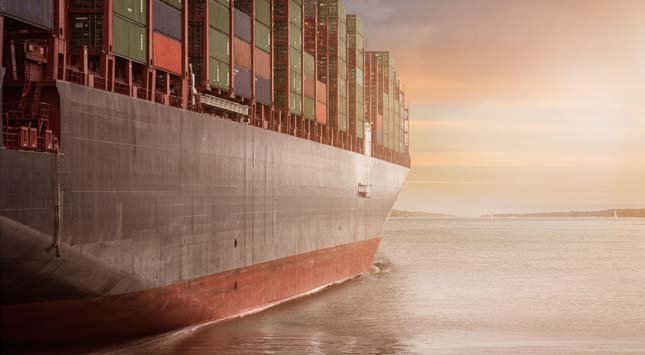Fuel consumption, safety, and speed are the primary motivations for determining the best maritime shipping routes. The best shipping routes would let a vessel travel safely while consuming fuel efficiently traveling at high speeds.
Another motivation for seeking a better shipping route that has arisen recently is decarbonization. As the maritime shipping industry commits itself to cutting its greenhouse gas emissions, the demand for more eco-friendly shipping routes increases.
The maritime shipping industry already employs tools that aid it in plotting the best navigation routes. For instance, GPS is used for navigational hazard location and mapping. However, recent advancements in technology offer even more utility.
There are a handful of reliable tools that help determine the best navigation routes, but before we discuss them, let’s first look at how shipping routes are planned.
You May Read: ATE Pin Electronics
Planning a Shipping Route
There are a lot of considerations in planning a shipping route. Global weather forecasts and weather systems can change while sailing, complicating maritime logistics. The type and size of the vessel also influence planning.
The port of departure, the destination, and required arrival times all contribute to the planning as well. However, the most important consideration might be expenses.
Charter rates, fuel type, bunker prices, and speed inside and outside emission control areas are just some of the fees that constitute total shipping costs.
A manager, also known as a route analyst, is in charge of presenting the ship captain with three options before the voyage begins. The three options are as follows:
- The direct route that doesn’t take into consideration weather events and perilous areas of the ocean such as pirate territories. Whether it’s an ideal route or not will be decided by chance.
- A route that prioritizes avoiding any severe weather conditions. This may mean following this route will result in arriving late or consuming more fuel.
- A route that includes periods of drift in which the ship takes advantage of calmer weather and runs its engine at lower power levels to burn less fuel. This may mean the vessel will take the longest time to arrive compared to following the other routes.
Tools for Determining Shipping Routes
1. Wayfinder by Sofar Ocean
This route optimization tool uses the largest open-ocean network of weather sensors to help plot an ocean route for safe, fuel-efficient, and fast shipping. The sensors collect information and send it to a global weather model, which produces 20% to 50% more accurate forecasts than NOAA and ECMWF.
Wayfinder generates an accurate digital twin of your ship using combined historical noon report data, ship properties, and their historical weather data. In addition, Wayfinder provides flexibility to help you navigate the evolving fleet compliance needs, helping you optimize your business according to what matters the most.
Wayfinder also allows ocean freight logistics companies to determine a route that also factors in business metrics such as market impact, contract terms, and strategic initiatives, aside from the weather.
2. Route Master by CargoSmart
Route Master is a tool for shippers to discover and optimize their ocean container shipping routes depending on weighted parameters. This tool lets ocean freight logistics companies search and compare routes from three months in the past out to six months into the future by providing a database of previous shipping routes and logged voyages.
It can also plan routes around a limited number of customized parameters, including transit times, reliability, cost, and carriers.
3. Navi-Planner by Transas
Navi-Planner uses the world’s largest navigational databases and artificial intelligence to plot a safe route automatically. It’s recognized as among the Electronic Chart Display and Information System (ECDIS) market’s most powerful charts and data management tools.
Navi-Planner features a set of databases, applications, and services designed for every step of voyage planning. Through its connection to ECDIS, this tool can decrease time spent on onboard voyage planning from 5 hours to 30 minutes. It’s also easier to use for the less experienced crew as it offers minimum navigational safety standards.
4. PassageManager by ChartCo
PassageManager is an automated and configurable tool that makes voyage planning fast, safe, and efficient. This tool allows the onshore crew to execute in-depth appraisals and create safe, timely, and accurate ECDIS-compliant routes.
It lets users simply input voyage details to get a visual representation of the optimal route and a detailed table of waypoints. Users can also tweak routes to get a better idea of how shifting circumstances will impact the voyage.
5. Bon Voyage System by StormGeo
Bon Voyage System (BVS) is a user-friendly route optimization tool that offers voyage planning and reliable weather forecast. BVS allows the master to see what conditions to expect in the surrounding areas, helping ascertain whether alterations in the course or speed would yield better results.
BVS can be paired with Navi-Planner as a weather and route optimization module, allowing users to import routes from ECDIS, monitor weather conditions, optimize routes based on cost, required arrival time or least time en route, check for intersecting ENCs, transfer optimized routes instantly to the ECDIS without using USB drives, make a fully compliant voyage plan, acquire ports information, and produce a voyage report.
6. Ship Performance Optimization System by MeteoGroup
Ship Performance Optimization System (SPOS) is a route-planning and optimization tool that gives captains confidence in their decisions and supports their execution.
Through SPOS, captains can safely navigate the seas with minimal fuel consumption and emissions through the calculation and recalculation of optimum routes and anticipating oncoming weather and sea conditions.
SPOS factors in all sorts of weather elements, relying on timely weather updates and forecasts to guarantee the crew are always aware of their surroundings and incoming conditions.

